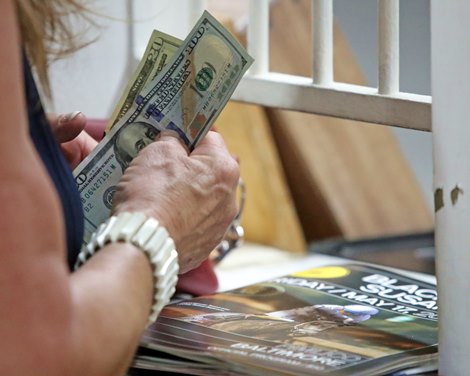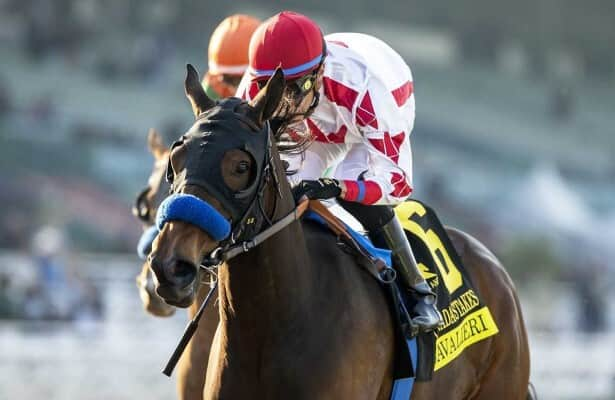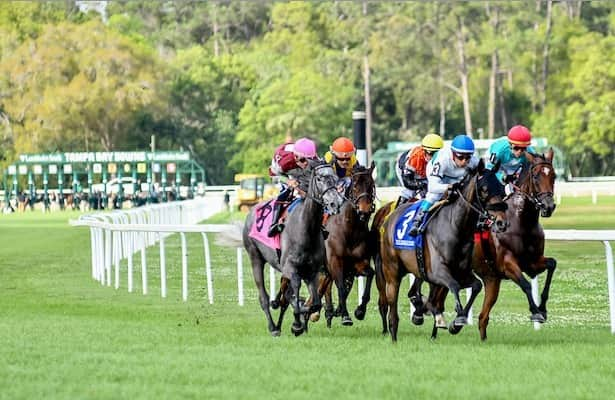A look at the Thoroughbred Racing Economic Indicators report for the third quarter suggests that the rising tide of sports wagering is not lifting the pari-mutuel boat.
Pari-mutuel wagering on United States races of $2.915 billion for the quarter was off 4.57% when compared with the third quarter of 2023. While much of racing’s handle struggles in recent years can be tied to a reduction in race days, that’s not completely the case here, as the 4.57% decline far outpaced the 1.49% decline in third-quarter race dates to 1,189.
These struggles occurred during a quarter in which sports betting grew at least 6%, according to legalsportsreport.com, which notes that its numbers in more recent months will likely increase as they become more complete. But even at the levels reported earlier this month, legal sports betting handle for the third-quarter months of July-September was up 6% to $25.625 billion.
In explaining the growth, LSR noted several positive trends for sports betting.
“States that opened their industries during the first few years of the post-PASPA era have hit their stride by now, and the periodic launch of new markets is fueling an ongoing increase in the national totals,” the site reported. “More than half of American adults now have access to regulated retail and/or online sports betting in their home state. And with a couple of the largest markets still closed to legal operators (California, Texas), the biggest months of United States sports betting are still on the horizon.”
At the Sports Wagering and Impact on Horse Racing Symposium presented by BloodHorse and Breeders’ Cup in September 2018, experts noted the importance of having racing side by side on the online sports betting platforms—noting the sport’s ability to provide content could be a strength. They also called on the sport to take a deep look at its takeout structure as low-takeout sports wagering would soon be widely available.
In the years since, neither objective has occurred. Some progress has occurred with major sports betting platforms such as FanDuel and DraftKings offering pari-mutuel wagering on apps that are a click away. And FanDuel allows a shared wallet for deposits into its sports betting and race betting. On takeout, racing has continued to funnel new players into a high-takeout structure that is exacerbated by the industry’s welcoming of heavily rebated, high-volume computer-robotic wagering teams. New players quickly find out that pari-mutuel wagering is a far tougher game than fixed-odds wagers on sports.
But racing largely has shied from the fixed-odds model that would allow it to be available side by side with other sports. One would think the money rolling in to purses and tracks from added gaming would put the industry in position to at least try something new, perhaps for a trial period?, but that largely hasn’t happened.
Horse racing saw a significant bump in pari-mutuel interest during the COVID-19 years as it was one of the few sports going during some of those months and it had the advance-deposit wagering platforms in place to allow off-track wagering. Handle saw a nearly 12% bump in 2021 to $12.216 billion but it has declined each year since, down 0.9% in 2022 and 3.7% in 2023.
Through the first nine months of this year, pari-mutuel handle is down 2.89% to $8,865,549,399. In this case the handle decline matches the 2.9% decline in race days.
Granted, it’s hard to determine if there’s a direct relationship between racing’s losses and sports wagering’s gains. What we do know is that in the years since sports wagering expansion began, there’s been little desire in the industry to do much beyond the status quo. And under that status quo approach, racing is seeing the same performance, ranging from flat to slow decline, that it’s seen in most years since 2004.
It still seems to me that the opposite—increased race wagering—should be taking place in this new era.












